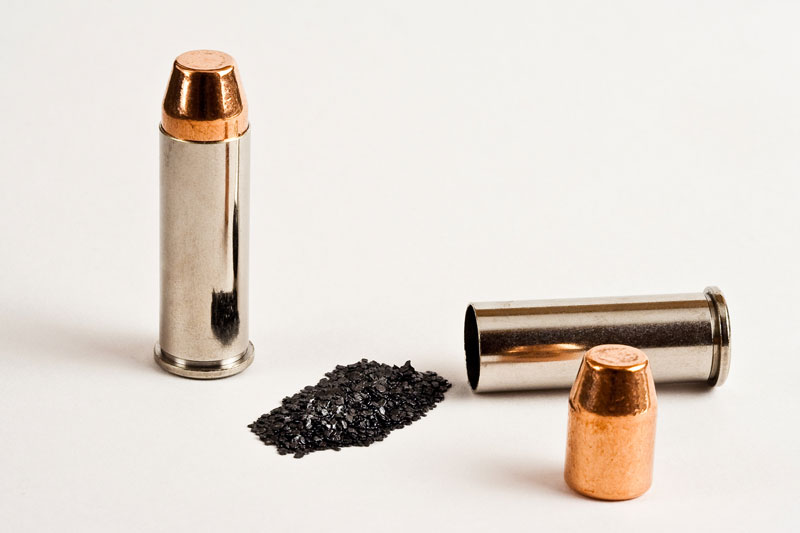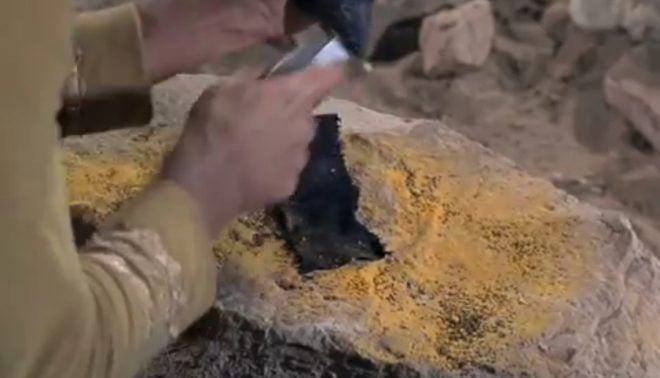The Greatest Guide To Smokeless Powder
Table of ContentsThe Greatest Guide To Accurate PowderGun Powder Can Be Fun For EveryoneMore About Hodgdon PowderMore About Ramshot Powder
The gaseous propellant decays right into easier molecules in a bordering fizz zone. Power is launched in a luminescent external flame zone where the simpler gas molecules react to develop conventional combustion products like steam and also carbon monoxide gas. The foam area works as an insulator slowing the price of heat transfer from the fire area right into the unreacted solid.Propellants designed for a minimal heat transfer pressure might stop working to maintain the flame area at lower pressures. The energised components used in electric propellants consist of nitrocellulose (one of the most usual), nitroglycerin, nitroguanidine, DINA (bis-nitroxyethylnitramine; diethanolamine dinitrate, DEADN; DHE), Fivonite (2,2,5,5-tetramethylol-cyclopentanone tetranitrate, Cy, P), DGN (diethylene glycol dinitrate), and also acetyl cellulose.
These consist of tin steel as well as substances (e. g., tin dioxide), and bismuth metal as well as substances (e. g., bismuth trioxide, bismuth subcarbonate, bismuth nitrate, bismuth antimonide); the bismuth compounds are favored as copper dissolves in molten bismuth, developing weak and also quickly detachable alloy. Lead aluminum foil as well as lead compounds have actually been eliminated due to poisoning. Large guns make use of polyurethane coats over the powder bags. Other ingredients consist of ethyl acetate (a solvent for manufacture of round powder), rosin (a surfactant to hold the grain form of round powder) as well as graphite (a lubricant to cover the grains and also prevent them from sticking, and to dissipate fixed electrical power). Before projectiles leave, a minor pre-flash might take place from gases leaking past the projectiles. Following muzzle departure, the warmth of gases is normally adequate to give off visible radiation: the primary flash. The gases expand but as they go through the Mach disc, they are re-compressed to generate an intermediate flash.
g. hydrogen and carbon-monoxide) might comply with when they combine with oxygen in the bordering air to produce the secondary flash, the brightest. The second flash does not typically occur with tiny arms.: 5556 Nitrocellulose has not enough oxygen to totally oxidize its carbon as well as hydrogen. The oxygen shortage is boosted by addition of graphite and natural stabilizers.
Fascination About Hodgdon Powder
At high temperature, these flammable gasses will certainly ignite when turbulently blended with climatic oxygen past the muzzle of the gun. Throughout night engagements, the flash created by ignition can expose the area of the gun to opponent pressures: 322323 and cause momentary night-blindness amongst the weapon team by photo-bleaching visual purple.
Weapons muzzle flash approximately 150 feet (46 m) from the Learn More muzzle has actually been observed, as well as can be reflected off clouds and also be noticeable for distances up to 30 miles (48 kilometres).: 322323 For artillery, the most efficient method is a propellant that produces a large proportion of inert nitrogen at reasonably reduced temperatures that thins down the flammable gases.
Prior to making use of three-way based propellants, the common approach of flash reduction was to include not natural salts like potassium chloride so their details warm capability may lower the temperature of burning gasses and also their finely split particulate smoke could obstruct visible wavelengths of glowing power of combustion.: 323327 All flash reducers have a negative aspect: the production of smoke.
, beginning in 1900.
The Facts About Hodgdon H4350 Revealed

The mixture was after that fed via a press squeezing out a long tubular cord form to be reduced into grains of the desired length.: 3135 Alcohol and ether were then vaporized from "environment-friendly" powder grains to a continuing to be solvent concentration between 3 percent for rifle powders and 7 percent for big weapons powder grains (https://dev.azure.com/jamesconnor33458/h0dgdonpwdrs/_wiki/wikis/h0dgdonpwdrs.wiki/1/Some-Ideas-on-Gun-Powder-You-Should-Know#).
Grains were coated with electrically conductive graphite to decrease generation of static power throughout subsequent mixing. "Great deals" including greater than ten tonnes of powder grains were blended via a tower plan of blending receptacles to decrease ballistic differences. Each mixed whole lot was then based on checking to figure out the appropriate filling fee for the wanted performance.: 3541: 293 & 306 Armed forces amounts of old electric powder were in some cases revamped into new great deals of propellants.: 39 With the 1920s Fred Olsen functioned at Picatinny Toolbox trying out means to salvage lots of single-base cannon powder produced for World Battle I.

Muzzleloading Powder for Dummies
The rounds can be subsequently changed by including nitroglycerine to raise power, squashing in between rollers to a consistent minimum measurement, coating with phthalate deterrents to retard ignition, and/or polishing with graphite to improve circulation attributes during blending.: 328330 Modern smokeless powder is produced in the United States by St. Marks Powder, Inc (https://h0dgdonpwdrs.netboard.me/h0dgdonpwdrs/#). Artillery: Its Beginning, Prime Time and Decrease (1969) smokeless powder "Laflin & Rand Powder Company". Du, Pont. Recovered 24 February 2012. Watters, Daniel E. "The Great Propellant Conflict". The Gun Zone. Archived from the original on 22 July 2013. Recovered 29 June 2013. (PDF). Nevada Aerospace Scientific Research Associates. Recovered 19 January 2017.